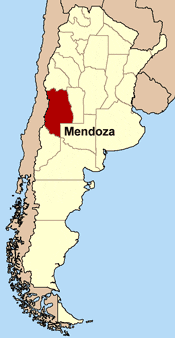The situation has only gotten bleaker for Argentina’s flailing olive oil industry, which despite performing well at international food competitions in recent years finds itself in a financial predicament driven by stagnant market prices and rising production costs, among other factors.
The recent crisis came to the government’s attention in early January, when agricultural representatives in Argentina’s Catamarca province requested federal aid after declaring a state of emergency. The government responded by exempting olive producers in the region from paying municipal taxes and fees over the next six months.
Now reports show that Mendoza, another key olive oil-producing region, is experiencing the same problems.
“The industry is going through a very difficult time,” Armando Mansur, president of Asociación Olivícola de Mendoza (ASOLMEN), told local newspaper Los Andes this week. “We have falling international prices and rising production costs, which leaves us with very little profit margin.”
Among other factors exacerbating the problem is the current state of the olive oil industry worldwide. Argentina controls just 2 percent of the world olive oil market, which is dominated by major producers like Spain, Portugal and Greece. Amidst the recent economic turmoil in Europe, domestic markets in these countries have struggled, resulting in government-subsidized campaigns to sell European products abroad and keep prices competitively low. Unable to push the price of oil up and calm production costs, Argentina’s comparatively modest producers are getting left in the dust.

Just how much have these prices fallen in recent years? According to Los Andes, olive oil sold for $3,600 a ton in 2009. By 2010, the price of oil had dropped to $3,100 a ton and today hovers around $2,400.
The decay of international oil prices wouldn’t be so detrimental to Argentina’s industry if the majority of its products were sold domest- ically. But less than 30 percent of the country’s olive oils are consumed internally, with the rest being exported. Argentina’s stubborn high export taxes only serve to complicate the situation further for olive producers, not to mention high inflation and a US dollar that won’t budge.
Mansur reminded reporters that this is not the first time Mendoza’s olive producers have experienced hardship. “We’ve been trying to get aid to help us alleviate the situation. On September 27 we urged the Government of Mendoza to declare an emergency on the sector, and we reiterated that request on February 8 of this year.”
Unlike the quick government response in Catamarca, Mendoza has yet to receive aid. Mansur pointed out, “On February 22 they responded by giving us a phone number and report number to check up on how the situation was being managed. We have no concrete results yet.”
Mansur explained that the provincial government had promised 600 pesos (about $150) to each employee, if the local growers could provide proof of the gravity of the situation. ASOLMEN then funded a study with the National University of Cuyo Department of Agricultural Economics and Sciences. “The acknowledged our efforts, but still no results,” said Mansur.
Mansur also added, “we realize that the relative importance of the olive oil industry is greater in Catamarca than in Mendoza but we’re still talking about a very important sector for Mendoza.”








